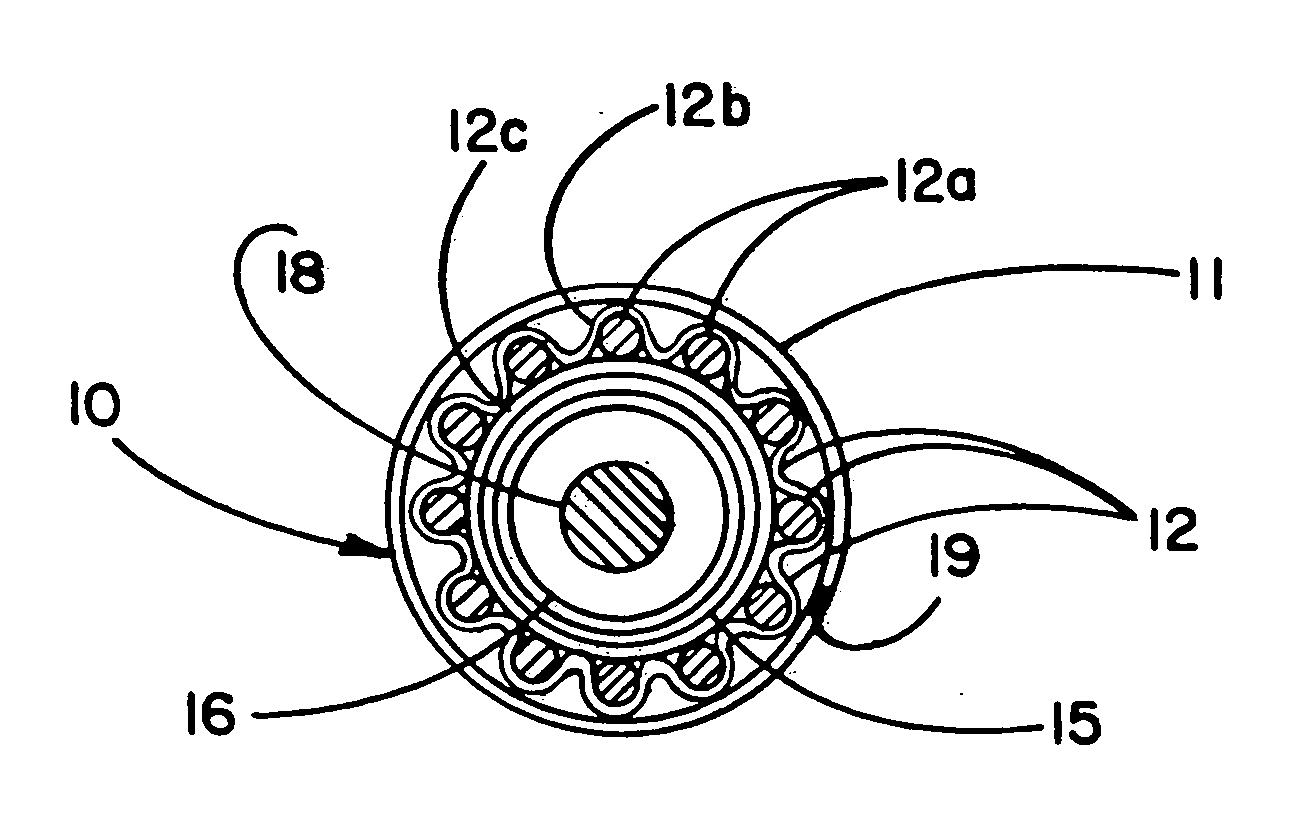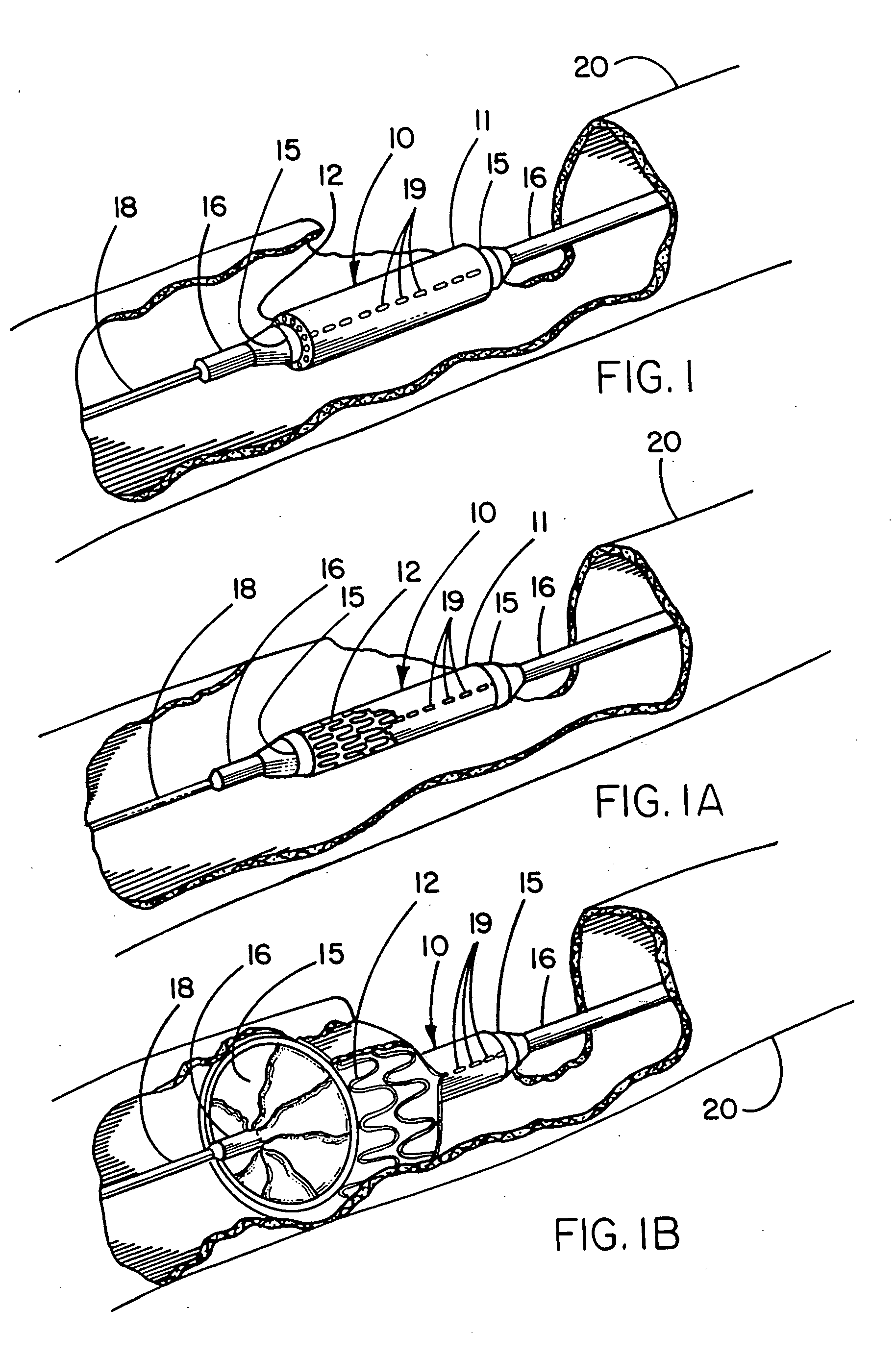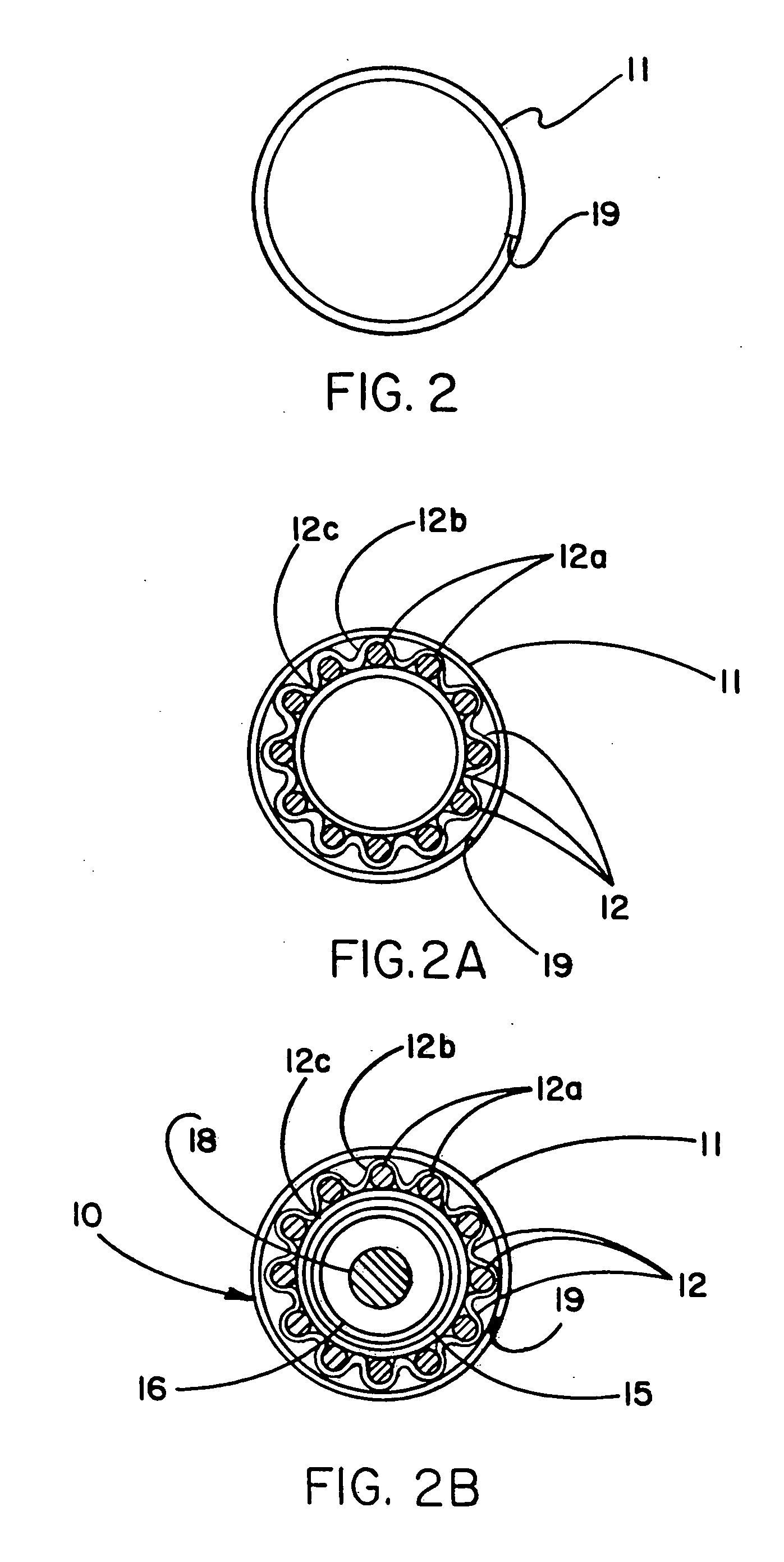Deployment system for intraluminal devices
a deployment system and intraluminal technology, applied in the field of transcatheter delivery and remote deployment of implantable medical devices, can solve the problems of reducing the accuracy of insertion, speed and control, and compromising luminal gain, so as to reduce the risk of dilating a healthy vessel, reduce the risk of insertion, and shorten the working length
- Summary
- Abstract
- Description
- Claims
- Application Information
AI Technical Summary
Benefits of technology
Problems solved by technology
Method used
Image
Examples
example 1
[0099] A 0.7 mm inside diameter ePTFE tube of about 20 cm length, about 0.03 mm thick and about 30 micron fibril length is fitted over a stainless steel mandrel of about 1.4 mm diameter. This tube is intended as a sacrificial tube upon which the constraining sheath is subsequently constructed. One end of the ePTFE tube is helically wrapped for a length of about 1 cm with another length of the same ePTFE tubing; this wrap is also sacrificial and intended only to later enable the release of the subsequently applied constraint sheath material. As such, both the underlying ePTFE tube fitted over the mandrel and the helically wrapped material are non-critical choices as long as they are capable of tolerating subsequent heat processing without becoming adhered to the constructed constraint sheath.
[0100] Next, four layers of ePTFE / FEP porous film laminate are applied from a roll of this film over the sacrificial ePTFE tube and helical wrap. The ePTFE film used to manufacture this laminate...
example 2
[0120] Two 4 mm diameter×40 mm length self-expanding endoprostheses were loaded within constraining sheaths constructed as described above, except a 1.6 mm mandrel and a length of 0.04 mm thick×0.4 mm wide gold ribbon were used. To evaluate the necessity of the packaging sheath, the diameters of these assemblies were measured over time without using packaging sheaths in the final device construction. Within 20 minutes after loading the devices within the constraining sheaths, the assemblies (still without packaging sheaths) were conditioned within an oven set at 60° C. and having approximately 15-20% relative ambient humidity within the oven chamber. During exposure to this temperature, periodic diameter measurements were taken. The 60° C. temperature was selected because this is a temperature that the system may be exposed to during a process such as ETO sterilization. Such elevated temperatures can be anticipated to accelerated the disruption or increase in diameter of an endopros...
PUM
 Login to View More
Login to View More Abstract
Description
Claims
Application Information
 Login to View More
Login to View More - R&D
- Intellectual Property
- Life Sciences
- Materials
- Tech Scout
- Unparalleled Data Quality
- Higher Quality Content
- 60% Fewer Hallucinations
Browse by: Latest US Patents, China's latest patents, Technical Efficacy Thesaurus, Application Domain, Technology Topic, Popular Technical Reports.
© 2025 PatSnap. All rights reserved.Legal|Privacy policy|Modern Slavery Act Transparency Statement|Sitemap|About US| Contact US: help@patsnap.com



